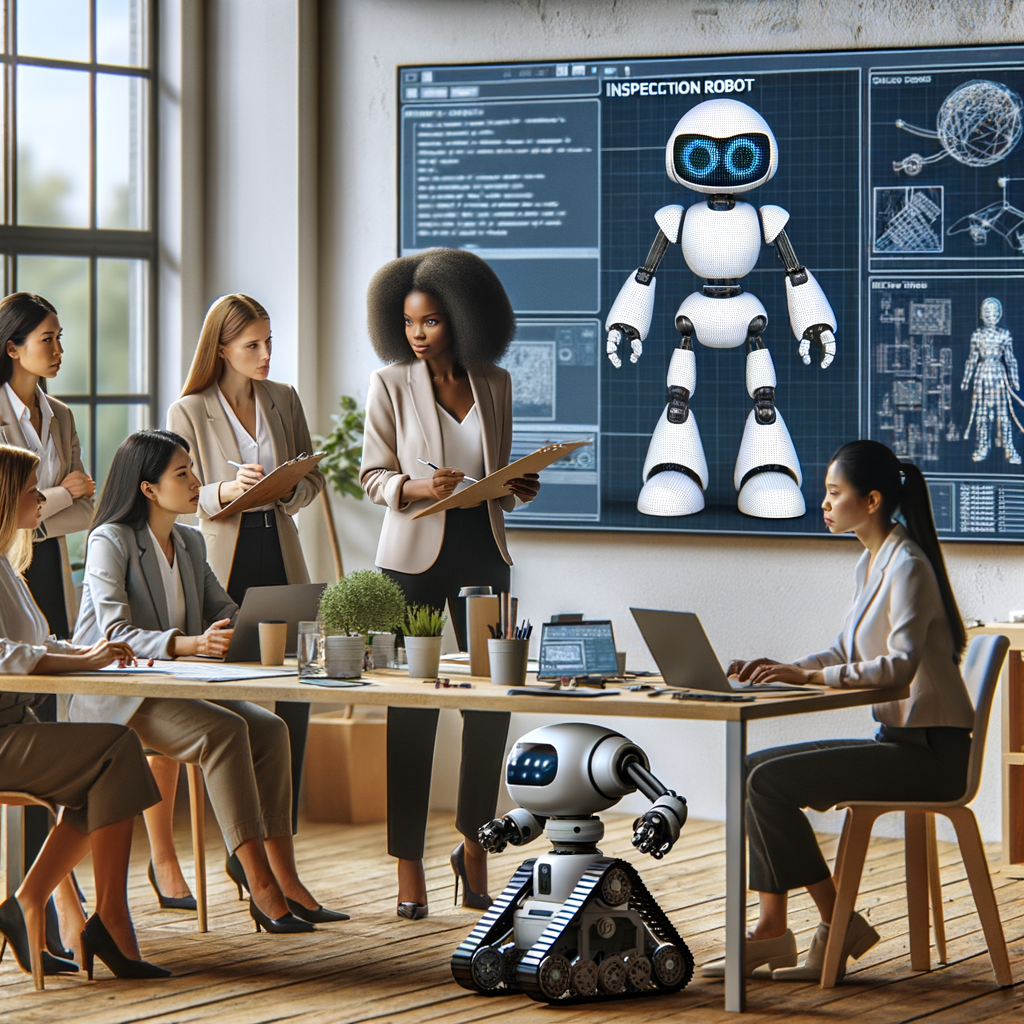In the ever-evolving landscape of industrial technology, artificial intelligence (AI) stands at the forefront, revolutionizing various sectors. One such area experiencing rapid transformation is the realm of inspection robots. The integration of AI into these robotic systems has significantly enhanced their efficiency, precision, and reliability, heralding a new era in industrial inspections. This article delves into the transformative impact of AI on inspection robots, exploring the profound advancements in their operational capabilities and the consequential benefits for various industries.
AI Brings New Era to Inspection Robots’ Efficiency
The advent of AI technology has ushered a new era in the efficiency of inspection robots, fundamentally changing how industries conduct inspections. Traditionally, inspection robots were programmed with specific instructions to perform repetitive tasks. However, with AI, these machines have gained the ability to adapt and learn from their environments, leading to more efficient and effective operations. AI algorithms enable robots to process vast amounts of data quickly, identifying patterns and anomalies that might escape human notice. This ability to learn and improve over time has marked a significant step forward in inspection efficiency.
Moreover, AI-driven robots now boast enhanced decision-making capabilities, allowing them to operate autonomously in complex environments. This autonomy reduces the need for constant human oversight, freeing up personnel to focus on more strategic tasks. The robots’ advanced sensors, combined with AI, allow for real-time data processing, which results in quicker and more accurate inspections. This improvement in operational speed not only saves time but also reduces costs for companies reliant on regular inspections.
AI’s integration into inspection robots also enhances their precision. By leveraging machine learning models, these robots can achieve higher accuracy rates in detecting defects, corrosion, or potential safety hazards. AI’s ability to handle intricate and nuanced data means inspections are not only faster but also more thorough, ensuring that even the smallest issues are identified and addressed promptly.
Finally, the continuous improvement in AI technology means inspection robots are constantly evolving. As AI algorithms become more sophisticated, the efficiency and capabilities of these robots are expected to grow exponentially. This ongoing advancement suggests that the future of industrial inspections will be dominated by highly efficient, AI-enhanced robots capable of performing tasks beyond current expectations.
Transformative Impact of AI on Industrial Inspections
AI’s transformative impact on industrial inspections extends beyond mere operational improvements; it fundamentally alters the inspection landscape. With AI, industries can now perform inspections that were previously deemed too hazardous or complex for human inspectors. Robots equipped with cutting-edge AI can navigate dangerous environments, such as nuclear plants or underwater facilities, with minimal risk to human life. This capability not only improves safety but also broadens the scope of possible inspection sites.
The economic benefits are equally compelling. AI-enhanced inspection robots reduce downtime by allowing for predictive maintenance. By analyzing data trends, AI can predict when a machine or system is likely to fail, enabling preemptive repairs. This predictive capability minimizes unexpected breakdowns, leading to significant cost savings and improved operational efficiency. Companies can allocate resources more effectively, optimizing their maintenance schedules based on AI-generated insights.
Furthermore, AI-driven robots provide a level of consistency and reliability that human inspectors might struggle to achieve. Human error, fatigue, and subjective judgment can lead to inconsistent inspection results. In contrast, AI-powered robots maintain uniform performance standards across all inspections, ensuring that all potential issues are identified and addressed consistently. This reliability enhances product quality, boosts customer satisfaction, and strengthens brand reputation.
The transformative impact of AI on industrial inspections is also evident in the data analytics realm. AI algorithms can process and analyze inspection data far more efficiently than humans, extracting insights that lead to actionable decisions. This data-driven approach enables companies to refine their operations and improve overall efficiency. As industries continue to embrace AI, the role of inspection robots will only become more integral to operational success.
Robots Enhanced by AI: A Leap in Precision and Speed
The integration of AI into inspection robots represents a significant leap forward in both precision and speed, redefining industry standards. AI’s ability to analyze visual data with great accuracy allows these robots to detect minute defects or anomalies that could lead to larger issues if left unaddressed. This heightened precision ensures that businesses can maintain high-quality standards and prevent costly failures.
In terms of speed, AI-enhanced robots outperform traditional inspection methods by rapidly processing and interpreting data. Machine learning models can sift through extensive datasets at a pace far beyond human capability, enabling quick decision-making and swift action. This speed is particularly beneficial in industries where time is of the essence, such as manufacturing and energy production, where delayed inspections can result in significant financial losses.
Moreover, AI’s contribution to the adaptability of inspection robots cannot be overstated. By learning from past inspections and constantly updating their knowledge, these robots can adapt to new scenarios and requirements with remarkable agility. This adaptability ensures that robots remain relevant and effective in dynamic industrial environments where conditions can change rapidly.
Finally, the AI-driven leap in precision and speed has significant implications for compliance and regulatory standards. With the ability to perform detailed and accurate inspections efficiently, companies can ensure compliance with industry regulations and standards without the need for extensive human resources. This capability enhances a company’s reputation and reduces the risk of non-compliance penalties, further solidifying the value of AI in inspection processes.
In conclusion, the integration of AI into inspection robots is revolutionizing the industrial landscape by enhancing efficiency, precision, and speed. These technological advancements are not only improving operational safety and reliability but also providing significant economic benefits through cost savings and optimized resource allocation. As AI technology continues to evolve, the capabilities of inspection robots will only expand, promising a future where industrial inspections are faster, safer, and more accurate than ever before. Embracing this AI revolution will be crucial for industries aiming to stay competitive in an increasingly technology-driven world.

